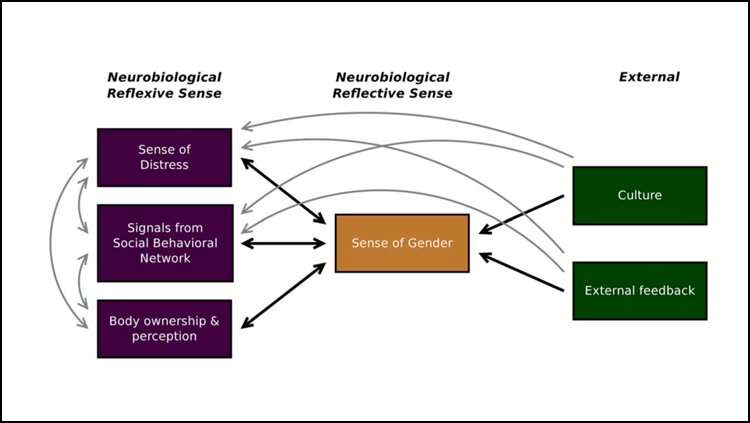The neurobiological basis of gender dysphoria

A new theory of gender dysphoria argues the symptoms of the condition are due to changes in network activity, rather than incorrect brain sex, according to work recently published in eNeuro.
Gender dysphoria is a state of extreme distress caused by the feeling that a person's true gender does not match the gender assigned at birth. The leading theory of the mechanism behind gender dysphoria attributes the condition to people possessing brains regions with the size and shape of the opposite sex, instead of their biological sex. However, recent brain imaging studies don't support that theory.
Stephen Gliske reviewed previous research and has developed a new multisense theory of gender dysphoria focused on function of brain regions, rather than only size and shape. He proposes gender dysphoria is caused by altered activity in three networks—the distress, social behavior, and body-ownership networks—affecting distress and one's sense of their own gender. Previous studies support the premise that activity changes in these networks are associated with anatomical changes and feelings of gender dysphoria.
If supported by further research, this theory could offer ways to treat the distress of gender dysphoria patients without relying on invasive and irreversible gender reassignment surgery.
More information: A New Theory of Gender Dysphoria Incorporating the Distress, Social Behavioral, and Body-Ownership Networks, eNeuro, DOI: 10.1523/ENEURO.0183-19.2019
















